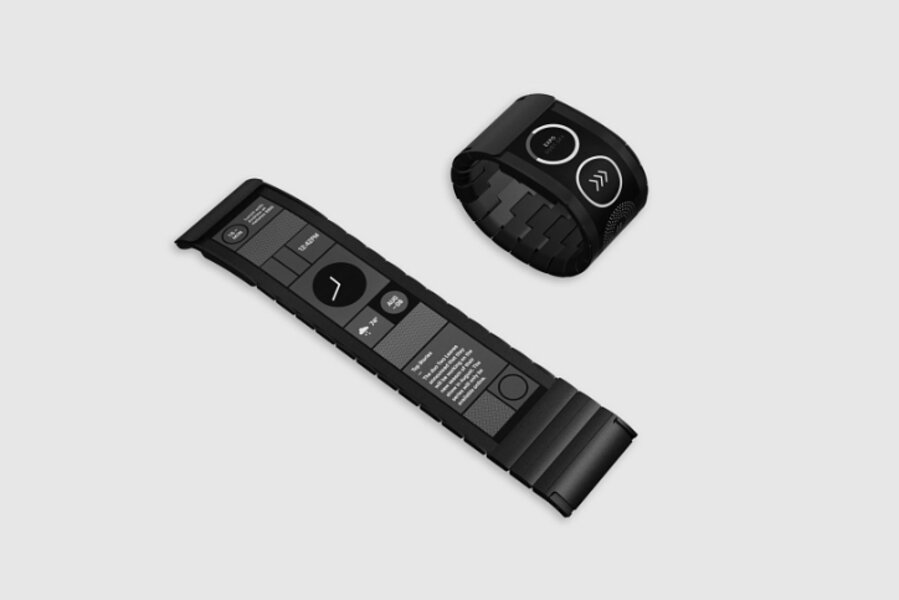New startup promises world's first truly flexible touch-screen display
Loading...
Smart watches may be all the rage, but one company is taking wearable technology a step further.
Polyera, a flexible electronics startup that grew out of Northwestern University in Illinois, introduced on Monday its first commercial product: a touch-screen display that can wrap around a person’s wrist. Called the Wove Band, the device doesn’t simply curve – it “can twist, bend, and roll up like a yoga mat,” as CNNMoney puts it.
Think the slap bracelet meets the iPhone.
“Most attempts at making flexible displays have relied on traditional electronics materials, such as silicon, being deposited on plastic substrates,” the company says in a statement. “This approach allows the creation of products with fixed curved screens, but the brittleness of these electronics layers makes them unsuitable for products which are dynamically flexible such as the Wove Band.”
This isn’t the first time the industry has seen flexible electronics: Both Samsung and LG have talked about releasing bendable products by 2016 or 2017, CNET reports, while Apple in January was awarded a patent for “flexible electronic devices.”
Polyera, however, says that the materials that it developed over the last decade and which it uses for the Wove Band allow for “products with true, dynamically-flexible displays” that can do much more than just curve or bend. According to InformationWeek, a trade publication for the business technology community:
[A] display is made up of two parts: the first is a frontplane, which is the layer that makes the image you see. The second is a backplane, which is an array of TFTs that control which pixels in the frontplane turn on and off.
With Polyera Flexible TFTs, the backplane can be made flexible, making the full display flexible, in contrast to traditional display technologies where the backplane has previously been a constraint.
The flexible electronics market could be worth $13 billion by 2020, consumer research firm Markets and Markets estimates, largely because of the technology’s potential to provide lightweight, portable, and relatively cheaper products that could withstand more pressure than less malleable materials.
“The majority of electronic devices we surround ourselves with are what I call ‘rigid bricks,’ ” Phil Inagaki, Polyera founder and chief executive officer, told CNN Money. “And what I thought was that if we could allow these to be softer (and) more flexible, it would allow for all sorts of new experiences and devices to be created.”
The Wove Band is expected to launch in 2016, with Polyera set to release the proof-of-concept in September.






